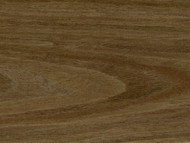Walnut veneer is prized for its rich tones and beautiful grain patterns. There are various types of walnut veneer, each offering a distinct appearance and style. Here are six different types of walnut veneer:
1. Plain Sliced Walnut Veneer (Flat Cut)
- Appearance: This is the most common type of walnut veneer, with a cathedral-like grain pattern. The slicing method creates broad, sweeping arches (cathedrals) and linear grain in other sections.
- Use: Popular in furniture, cabinetry, and paneling due to its classic, elegant look.
2. Quarter Sawn Walnut Veneer
- Appearance: Quarter sawing produces a more uniform, linear grain pattern with straighter lines. The veneer has a subtle, understated elegance compared to plain sliced walnut.
- Use: Often used in high-end furniture and cabinetry, as it provides a refined and consistent appearance.
3. Figured Walnut Veneer
- Appearance: Figured walnut veneer showcases striking, wavy, or curly grain patterns. These unique figures occur naturally in the wood and can include variations like burl, crotch, or fiddleback.
- Use: Ideal for decorative furniture, inlays, and statement pieces due to its stunning, eye-catching design.
4. Walnut Burl Veneer
- Appearance: Walnut burl veneer is cut from the knobby, rounded growths found in walnut trees. This veneer has a highly figured, swirling grain pattern with knots and intricate designs.
- Use: Frequently used in luxury items like fine furniture, automotive interiors, and veneers for musical instruments due to its high-end appearance.
5. Crotch Walnut Veneer
- Appearance: Crotch walnut veneer is sourced from the part of the tree where the trunk divides into branches. It produces a dramatic flame-like pattern, often resembling a V-shape or feathered appearance.
- Use: Used in high-end furniture and design elements that require a dramatic, eye-catching effect.
6. European Walnut Veneer
- Appearance: European walnut, or English walnut, veneer features a slightly lighter and more uniform color compared to American black walnut. The grain is still prominent but more subtle, with occasional dark streaks.
- Use: This veneer is popular for furniture, cabinetry, and architectural woodwork where a lighter, more uniform look is desired.
These various types of walnut veneer offer a range of aesthetics, from classic and refined to dramatic and luxurious, making them versatile for different design projects and styles.
